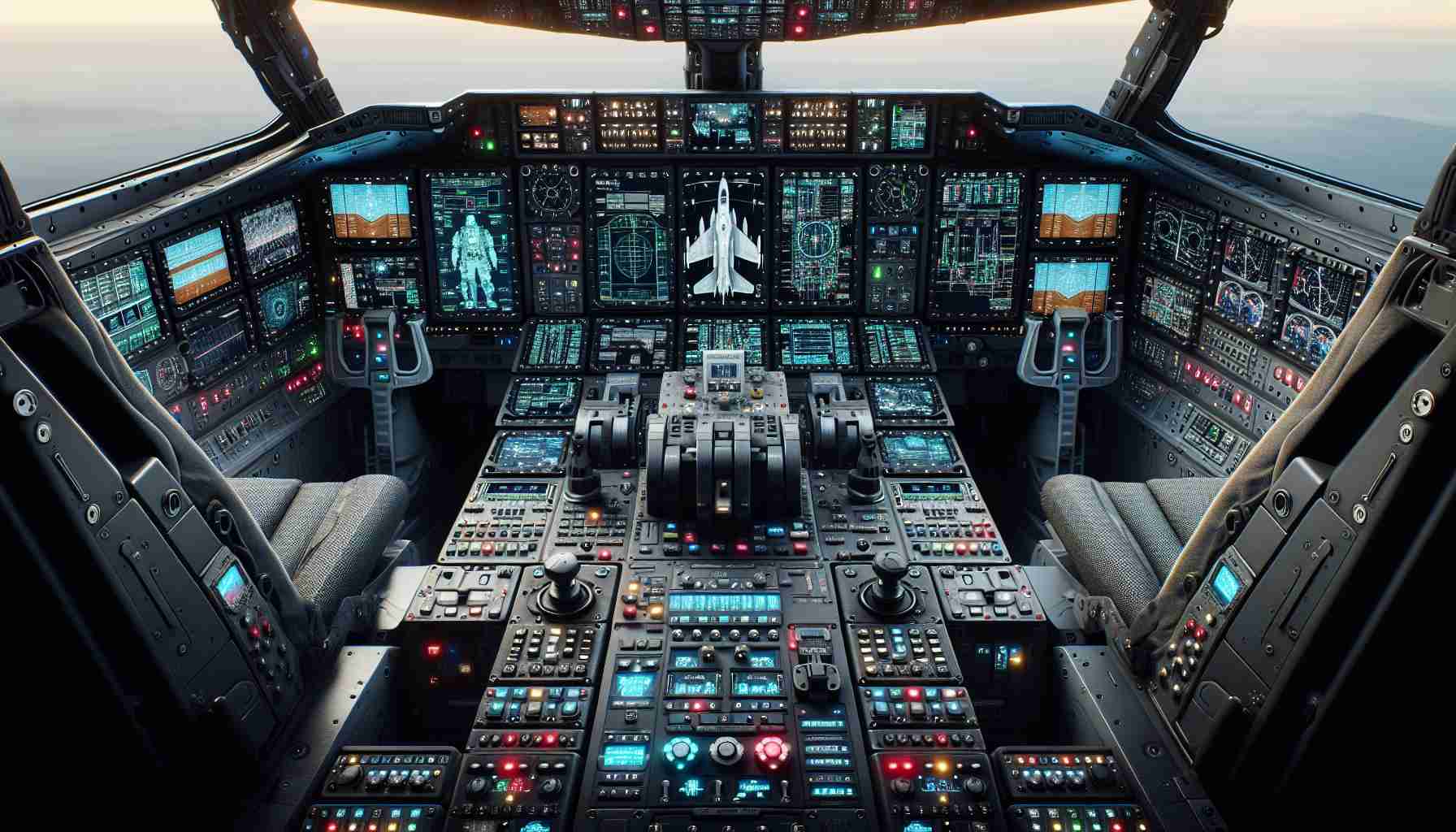The F-35 Lightning II, developed by Lockheed Martin, represents a quantum leap in modern combat aircraft design, integrating cutting-edge technology for unprecedented situational awareness and combat capabilities. As military aviation continues to evolve, understanding the complexities of the F-35 cockpit provides vital insights into the future of aerial warfare.
At the heart of the F-35’s cockpit is its Advanced Avionic System, which combines multiple functionalities into a single platform. The design features a large touchscreen display that enables pilots to manage information more efficiently than previous generations of fighter jets. This display integrates data from multiple sensors, providing a comprehensive battlefield picture at a glance. Pilots can manipulate the interface using a glove-friendly touchscreen, which is a significant advancement in pilot-vehicle interaction.
An exceptional feature of the F-35 cockpit is its Distributed Aperture System (DAS), a network of six infrared cameras that offer a 360-degree view of the surrounding environment. This system enhances the pilot’s situational awareness tremendously, as it allows for real-time monitoring of threats and targets without the need to rely solely on traditional heads-up displays. DAS also enables advanced functionalities, such as targeting and threat detection, making the pilot’s decision-making process faster and more efficient.
Moreover, the F-35 is equipped with the Active Electronically Scanned Array (AESA) radar, which is a game changer in aerial combat. This radar system allows the aircraft to track multiple targets simultaneously and provides high-resolution imaging of the battlefield. The AESA radar not only improves detection capabilities but also increases the aircraft’s survivability by allowing it to engage in electronic warfare while maintaining situational awareness.
The F-35 cockpit also incorporates cutting-edge communication and data-sharing technologies. In a multi-domain battlefield, the F-35 serves as a node in a larger combat network, sharing its sensor data with other allied units in real time. This capability allows for coordinated strikes and enhances the effectiveness of joint operations, reflecting a shift from the lone wolf mentality of previous air missions to a more integrated approach to warfare.
The Helmet-Mounted Display System (HMDS) is another ground-breaking component of the F-35 cockpit. Unlike traditional heads-up displays that limit a pilot’s view, the HMDS projects critical flight and targeting information directly onto the visor of the helmet. This innovation allows pilots to look through the aircraft (thanks to the DAS) and engage targets without needing to point the aircraft in their direction, greatly enhancing the aircraft’s combat flexibility.
Training to operate the F-35 is equally advanced. With the help of simulators that accurately replicate the cockpit environment and flight dynamics, pilots undergo rigorous training that prepares them for real-world scenarios. These simulators are combined with software updates that reflect evolving combat conditions, ensuring that pilots remain at the top of their game.
In summary, the F-35 cockpit is a testament to the advancements in military aviation technology. It is designed not only to excel in performance but also to enhance the pilot’s ability to control and respond to complex battlefield dynamics. With its integration of advanced radar, real-time data sharing, and innovative display systems, the F-35 represents the future of advanced aerial warfare, consolidating combat effectiveness and situational awareness into a single, streamlined platform. As military conflicts become increasingly complex, the F-35 stands ready to redefine air superiority.
Mastering Military Aviation: Tips, Life Hacks, and Interesting Facts
The F-35 Lightning II symbolizes a monumental shift in military aviation technology. As we dive deeper into the realm of this incredible aircraft, here are some valuable tips, life hacks, and interesting facts that can enhance your understanding and appreciation of the complexities of the F-35 and modern aerial warfare.
Tip #1: Stay Updated with Technology Trends
Military technology is continually evolving. To keep abreast of new developments in aircraft systems like the F-35, follow trustworthy military news sources and blogs. This can provide insights into future innovations in aviation technology. For reliable updates, visit Lockheed Martin and other military-focused publications.
Tip #2: Embrace Simulation Training
Understanding the simulator training utilized for the F-35 can help in grasping how pilots prepare for actual missions. Many modern training programs emphasize situational awareness and decision-making in virtual environments. Aspiring pilots and aviation enthusiasts can use flight simulators to develop their skills and experience flying different aircraft.
Life Hack #1: Leverage Open Source Learning
For those interested in studying avionics and modern warfare, there are many open-source courses available online. Websites that specialize in aviation and military science provide free resources, articles, and forums to learn from experts in the field.
Interesting Fact #1: The F-35’s Software Architecture
One intriguing aspect of the F-35 is its sophisticated software architecture, which allows for rapid upgrades and adaptability. This means that as new technologies emerge, they can be integrated into the F-35 without major overhauls, keeping the aircraft at the forefront of technology.
Interesting Fact #2: Multi-Domain Operations
The F-35 is not just designed to operate in the air; it plays a critical role in multi-domain operations (land, sea, air, cyber). Its ability to share real-time data makes it a vital asset in joint operations involving multiple branches of the military, which reflects the shift towards collaborative strategies in modern warfare.
Tip #3: Explore Networking Opportunities
For those interested in a career in military aviation or aerospace engineering, networking is essential. Participate in industry conferences, online forums, and local meetups to connect with professionals in the field. Engaging with experts can provide insights into career paths and technological advancements.
Life Hack #2: Build Relevant Skills
Whether it’s coding, understanding radar technology, or learning about data communications, developing skills relevant to military aviation can enhance your profile. Consider enrolling in engineering or computer science courses that focus on applications relevant to aerospace.
Interesting Fact #3: The Future of Aerial Warfare
The F-35 is a key player in shaping the future of aerial warfare. Its design reflects an understanding that air combat is becoming increasingly digitized and networked. Expect future developments to focus on automation, enhanced AI capabilities, and cyber warfare strategies.
Tip #4: Understand the Importance of Situational Awareness
In both military and civilian aviation, situational awareness is crucial. Learning techniques to improve situational awareness—such as effective scanning, data interpretation, and using technology to inform decisions—can be beneficial for pilots and aviation enthusiasts alike.
As you explore the world of military aviation, the F-35 represents not just a powerful aircraft but a beacon of the future of aerial capabilities. By understanding and utilizing these tips, hacks, and fascinating facts, you can enhance your knowledge and appreciation of this remarkable piece of technology. For more insights into military aviation technology, you can visit Lockheed Martin.

















